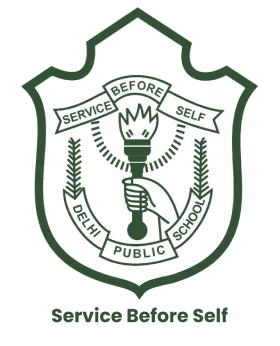Sometimes, studying alone feels insufficient to produce good results. A high school student starts feeling gloomy and demotivated when a routine gets taxing with no exciting element. To fix this, students are put in groups to share their goals with others. Free exchange of thoughts and information between high-school students improves their active learning objectives and areas. This is what we call cooperative learning in education. It is a method that emphasises student collaboration and teamwork skills in the classroom. Keep reading to find out about more cooperative learning tips that can benefit your child.
What is cooperative learning in education?
Working in groups is only one of the benefits of cooperative learning for teenagers. Another is collaborating teamwork skills to accomplish a goal bigger than anyone individually can. In cooperative learning, students study in small groups, solve each other’s doubts, and try to achieve common objectives. Cooperative learning inspires community building and active learning that improves a high schooler’s communication skills. Each group member is responsible for their active learning and their fellow friends. High school students develop critical abilities and many other skills to help them in the long run. They are:
- Teamwork skills include cooperating with other students, sharing duties, and pooling resources.
- Knowing how to work through data and think strategically in a team setting.
- To respectfully listen to others and express ideas clearly.
- Working together to develop one common stand for any personal and academic question.
DPS Warangal values cooperative learning and encourages students to use it in their classes, extracurricular activities, and social interactions.
What are the five features of cooperative learning?
Five main components are involved in cooperative learning. These five tenets are:
1. Positive independence:
One of the benefits of cooperative learning for teenagers is to work together to build a sense of “we” within the group. Each member’s success is interlinked with other members, known as positive interdependence. During active learning, every high schooler takes part under their responsibility. For example, consider biology. One student prepares about plants, another about animals, and the work is divided, and so on. In the final step, everyone pieces together to complete the ecosystem chart. It is done for any subject.
2. Individual accountability:
Every student’s contribution to a task during active learning is equal. Each student is responsible for their education and contribution to the group. Think about a group math activity. Each student solves a problem alone before comparing answers with the team. Such a healthy practice makes sure that every student understands.
3. Face-to-face interaction:
Students talk among themselves till they reach a common ground. Usually, it takes many rounds of clarification and criticism before a peaceful cooperative atmosphere is seen. It is like planning a class presentation for active learning. Students sit together, discuss ideas, and give feedback until all of them agree on a clear message.
4. Interpersonal and small group skills:
Benefits of cooperative learning for teenagers include learning leadership skills for smooth communication and solving disagreements. In a group discussion, one student acts as a leader who keeps everyone on the topic. Others listen, share views, and settle minor disputes respectfully for a smooth conversation boosting active learning.
5. Group processing:
Students evaluate their group’s performance regularly, note their areas for development, and make corrections that fix them. After finishing a group task, students talk about what went well, like work division and improvements to make. The benefits of cooperative learning for teenagers includes immense growth in education and personal life.
Five effective tips for high school students in cooperative learning
Students’ social and analytical skills and the capacity to provide and accept constructive criticism are all boosted through cooperative learning. It encourages teamwork skills as well. Below are five cooperative learning tips to help you implement this strategy in your classroom.
1. Study the theory:
Students should do their homework and ensure they fully understand the cooperative learning theory before implementing it in the classroom. This theory gives the foundation one needs to understand the objectives and various facets of the teaching approach.
A thorough understanding of cooperative learning shows whether it aligns well with the objectives you have in mind for your class.
Cooperative learning tips: Discuss the entire process beforehand with teachers and classmates since everyone participates actively.
2. Set clear roles to each:
The first step is to set clear goals and divide tasks among each member of the team. Cooperative learning is easier when high-schoolers know their responsibilities and contribute as asked.
When teachers discuss the expectations upfront, students avoid confusion and work better within the group. It boosts accountability, ensuring everyone does their part and reaches the goal together.
Cooperative learning tips: Create a checklist to help a group stay organised and focused during the project.
3. Forming pairs over large group:
Working in pairs produces better results, though few tasks do need larger groups. Better productive conversations happen in smaller groups, so every participant is heard. Pair work also lessens the possibility of one person controlling the conversation or the group becoming irritated because others aren’t keeping up.
When working with a larger group, pair students according to their strengths and weaknesses. For example, matching a student who is good at math with someone who is relatively poor at it maintains group balance and increases the benefits of cooperative learning for teenagers.
Cooperative learning tips: Ask your instructor or fellow students for help with pair-building. Teachers are best at building well-balanced teams.
4. Regularly reflect and evaluate:
Students should discuss what went well and what could be improved after finishing a cooperative learning exercise. This reflection guarantees that you’re making the most of group projects and helps you improve your strategy for upcoming ones.
For example, request feedback on how each member felt working with their peers or a rating.
Cooperative learning tips: Use this time slot for deep introspection to pinpoint areas that need perfection and work on them accordingly. A student becomes a more cooperative learner when he/she does this.
5. Establish ground rules for collaborative teamwork skills:
Setting ground rules to preserve decorum and order during cooperative learning sessions is vital. These guidelines include showing up on time, being courteous to one another, and speaking quietly when exchanging ideas or reacting to criticism.
Cooperative learning tips: Before beginning any active learning activities, have the class discuss and decide on ground rules.
Teachers at DPS Warangal use the best active learning techniques to design stimulating learning environments. Our methods promote creativity and critical thinking using active learning that boost benefits of cooperative learning for teenagers. By investigating various learning styles, students learn academically. Hence, we concentrate on tactics that encourage learning and development throughout a child’s life.


